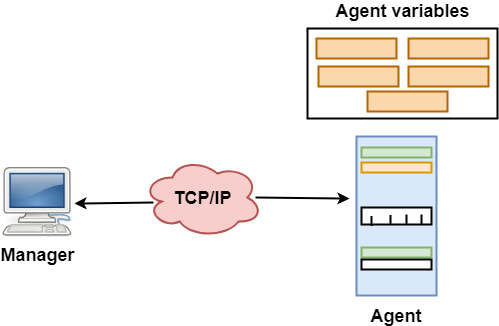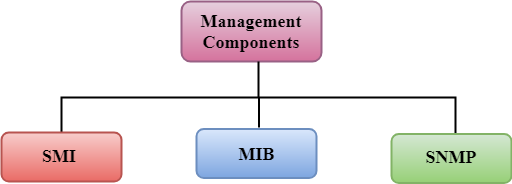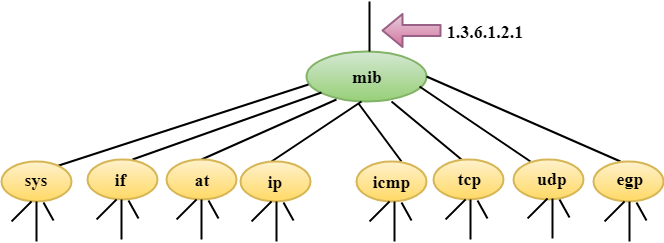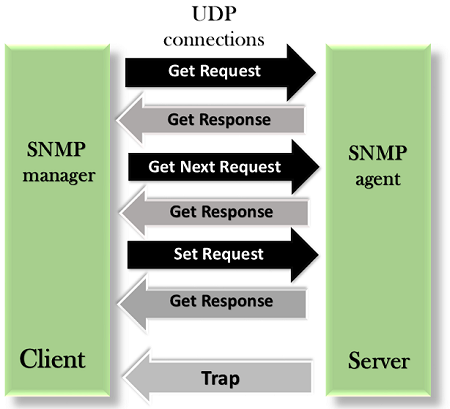Tutorial
Physical Layer
Data Link layer
Network Layer
Routing Algorithm
Transport Layer
Application Layer
Network Security
Misc
- Router
- OSI vs TCP/IP
- TCP vs UDP
- Transmission Control Protocol
- TCP port
- IPv4 vs IPv6
- ARP Packet Format
- ARP Table
- Working of ARP
- FTP Client
- FTP Commands
- FTP Server
- I2C Protocol
- Sliding Window Protocol
- SPI Protocol
- IP
- ARP Commands
- ARP
- Address Resolution Protocol
- ARP and its types
- TCP Retransmission
- CAN protocol
- HTTP Status Codes
- HTTP vs HTTPS
- RIP Protocol
- UDP Protocol
- ICMP Protocol
- MQTT protocol
- OSPF Protocol
- Stop and Wait Protocol
- IMAP Protocol
- POP Protocol
- CIFS
- DAS
- DIMM
- iSCSI
- NAS (Network Attached Storage)
- NFS
- NVMe
- SAN
- Border Gateway Protocol
- Go-Back-N ARQ
- RJ Cable
- Difference between Connection-Oriented and Connectionless Service
- CDMA vs. GSM
- What is MAC Address
- Modem vs. Router
- Switch Vs. Router
- USB 2.0 vs 3.0
- Difference between CSMA CA and CSMA CD
- Multiple access protocol- ALOHA, CSMA, CSMA/CA and CSMA/CD
- URI vs URL
- IMAP vs. POP3
- SSH Meaning| SSH Protocol
- UTP vs STP
- Status Code 400
- MIME Protocol
- IP address
- proxy server
- How to set up and use a proxy server
- network security
- WWW is based on which model
- Proxy Server List
- Fundamentals of Computer Networking
- IP Address Format and Table
- Bus topology and Ring topology
- Bus topology and Star topology
- Circuit Switching and Packet switching?
- Difference between star and ring topology
- Difference between Router and Bridge
- TCP Connection Termination
- Image Steganography
- Network Neutrality
- Onion Routing
- Adaptive security appliance (ASA) features
- Relabel-to-front Algorithm
- Types of Server Virtualization in Computer Network
- Access Lists (ACL)
- What is a proxy server and how does it work
- Digital Subscriber Line (DSL)
- Operating system based Virtualization
- Context based Access Control (CBAC)
- Cristian's Algorithm
- Service Set Identifier (SSID)
- Voice over Internet Protocol (VoIP)
- Challenge Response Authentication Mechanism (CRAM)
- Extended Access List
- Li-fi vs. Wi-fi
- Reflexive Access List
- Synchronous Optical Network (SONET)
- Wifi protected access (WPA)
- Wifi Protected Setup (WPS)
- Standard Access List
- Time Access List
- What is 3D Internet
- 4G Mobile Communication Technology
- Types of Wireless Transmission Media
- Best Computer Networking Courses
- Data Representation
- Network Criteria
- Classful vs Classless addressing
- Difference between BOOTP and RARP in Computer Networking
- What is AGP (Accelerated Graphics Port)
- Advantages and Disadvantages of Satellite Communication
- External IP Address
- Asynchronous Transfer Mode (ATM)
- Types of Authentication Protocols
- What is a CISCO Packet Tracer
- BOOTP work
- Subnetting in Computer Networks
- Mesh Topology Advantages and Disadvantages
- Ring Topology Advantages and Disadvantages
- Star Topology Advantages and Disadvantages
- Tree Topology Advantages and Disadvantages
- Zigbee Technology-The smart home protocol
- Network Layer in OSI Model
- Physical Layer in OSI Model
- Data Link Layer in OSI Model
- Internet explorer shortcut keys
- Network Layer Security | SSL Protocols
- Presentation Layer in OSI Model
- Session Layer in OSI Model
- SUBNET MASK
- Transport Layer Security | Secure Socket Layer (SSL) and SSL Architecture
- Functions, Advantages and Disadvantages of Network Layer
- Protocols in Noiseless and Noisy Channel
- Advantages and Disadvantages of Mesh Topology
- Cloud Networking - Managing and Optimizing Cloud-Based Networks
- Collision Domain and Broadcast Domain
- Count to Infinity Problem in Distance Vector Routing
- Difference Between Go-Back-N and Selective Repeat Protocol
- Difference between Stop and Wait, GoBackN, and Selective Repeat
- Network Function Virtualization (NFV): transforming Network Architecture with Virtualized Functions
- Network-Layer Security | IPSec Modes
- Next - Prev Network-Layer Security | IPSec Protocols and Services
- Ping vs Traceroute
- Software Defined Networking (SDN): Benefits and Challenges of Network Virtualization
- Software Defined Networking (SDN) vs. Network Function Virtualization (NFV)
- Virtual Circuits vs Datagram Networks
- BlueSmack Attack in Wireless Networks
- Bluesnarfing Attack in Wireless Networks
- Direct Sequence Spread Spectrum
- Warchalking in Wireless Networks
- WEP (Wired Equivalent Privacy)
- Wireless security encryption
- Wireless Security in an Enterprise
- Quantum Networking
- Network Automation
- Difference between MSS and MTU
- What is MTU
- Mesh Networks: A decentralized and Self-Organizing Approach to Networking
- What is Autonomous System
- What is MSS
- Cyber security & Software security
- Information security & Network security.
- Security Engineer & Security Architect
- Protection Methods for Network Security
- Trusted Systems in Network Security
- What are Authentication Tokens in Network security
- Cookies in Network Security
- Intruders in Network Security
- Network Security Toolkit (NST) in virtual box
- Pivoting-Moving Inside a Network
- Security Environment in Computer Networks
- Voice Biometric technique in Network Security
- Advantages and Disadvantages of Conventional Testing
- Difference between Kerberos and LDAP
- Cyber security and Information Security
- GraphQL Attacks and Security
- Application Layer in OSI Model
- Applications of Remote Sensing
- Seven Layers of IT Security
- What is Ad Hoc TCP
- What is Server Name Indication(SNI)
SNMP
- SNMP stands for Simple Network Management Protocol.
- SNMP is a framework used for managing devices on the internet.
- It provides a set of operations for monitoring and managing the internet.
SNMP Concept

- SNMP has two components Manager and agent.
- The manager is a host that controls and monitors a set of agents such as routers.
- It is an application layer protocol in which a few manager stations can handle a set of agents.
- The protocol designed at the application level can monitor the devices made by different manufacturers and installed on different physical networks.
- It is used in a heterogeneous network made of different LANs and WANs connected by routers or gateways.
Managers & Agents
- A manager is a host that runs the SNMP client program while the agent is a router that runs the SNMP server program.
- Management of the internet is achieved through simple interaction between a manager and agent.
- The agent is used to keep the information in a database while the manager is used to access the values in the database. For example, a router can store the appropriate variables such as a number of packets received and forwarded while the manager can compare these variables to determine whether the router is congested or not.
- Agents can also contribute to the management process. A server program on the agent checks the environment, if something goes wrong, the agent sends a warning message to the manager.
Management with SNMP has three basic ideas:
- A manager checks the agent by requesting the information that reflects the behavior of the agent.
- A manager also forces the agent to perform a certain function by resetting values in the agent database.
- An agent also contributes to the management process by warning the manager regarding an unusual condition.
Management Components
- Management is not achieved only through the SNMP protocol but also the use of other protocols that can cooperate with the SNMP protocol. Management is achieved through the use of the other two protocols: SMI (Structure of management information) and MIB(management information base).
- Management is a combination of SMI, MIB, and SNMP. All these three protocols such as abstract syntax notation 1 (ASN.1) and basic encoding rules (BER).

SMI
The SMI (Structure of management information) is a component used in network management. Its main function is to define the type of data that can be stored in an object and to show how to encode the data for the transmission over a network.
MIB
- The MIB (Management information base) is a second component for the network management.
- Each agent has its own MIB, which is a collection of all the objects that the manager can manage. MIB is categorized into eight groups: system, interface, address translation, ip, icmp, tcp, udp, and egp. These groups are under the mib object.

SNMP
SNMP defines five types of messages: GetRequest, GetNextRequest, SetRequest, GetResponse, and Trap.

GetRequest: The GetRequest message is sent from a manager (client) to the agent (server) to retrieve the value of a variable.
GetNextRequest: The GetNextRequest message is sent from the manager to agent to retrieve the value of a variable. This type of message is used to retrieve the values of the entries in a table. If the manager does not know the indexes of the entries, then it will not be able to retrieve the values. In such situations, GetNextRequest message is used to define an object.
GetResponse: The GetResponse message is sent from an agent to the manager in response to the GetRequest and GetNextRequest message. This message contains the value of a variable requested by the manager.
SetRequest: The SetRequest message is sent from a manager to the agent to set a value in a variable.
Trap: The Trap message is sent from an agent to the manager to report an event. For example, if the agent is rebooted, then it informs the manager as well as sends the time of rebooting.


